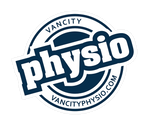There are quite a few medical diagnoses that can put fear and anxiety in patients, and one of the most commonly given diagnoses is the herniated disc. It is commonly blamed as the source for many people’s lower back pains in society and the leading cause for why so many doctors will prescribe patients pain medication, and why many doctors would refer their patients for steroid injections or even surgery.
However, today we have much more knowledge and understanding on how to approach the “scary” herniated disc diagnosis.
Herniated discs are common in people without back pain.
- We know that just because you have back pain, doesn’t necessarily mean that the disc is the culprit. Oftentimes, the disc never plays a part in the rehabilitation process with our patients. We just treat the patient as a whole and the discs and any injured tissue will heal on its own!
Lower back pain is common and just as prevalent regard of “posture”
- When it comes to lower back pain, don’t worry so much about “perfect” posture or blaming your chair or the slouching you do as the reason for your back pain. Back pain is complex and often there are a variety of reasons why you could be experiencing back pain. Let’s avoid jumping to conclusions such as “I need to change my pillow/bed/ chair” immediately as there might be other reasons which you can identify with the help of a professional.
Vertebral spine discs are a flexible but strong structure.
- Trust that for the most part, your disc is in good shape. Talk to your health care provider or physiotherapist who can help provide you with an appropriate treatment plan, including exercises to restore pain, function and strength, as well as provide you appropriate information about how to best manage your symptoms through activity modification and education.
Rehabbing a Herniated Disc
Your spine is made up of vertebrae (bones) and intervertebral discs (jelly-like donuts) that cushions each spinal level. Herniated discs or a “slipped” disc is a common term referring to a low back injury occurring most frequently between the ages of 30 and 50, and affects males more than females.
It is often caused by a memorable inciting event such as a strain or twisting movement. Lifting something that is too heavy or bending forward repetitively are common causes, but often there does not necessarily need to be a clear mechanism of injury, and occasionally happen spontaneously. An MRI is rarely helpful as studies have found many asymptomatic patients having herniated discs or signs indicating disc “pathology”, such rendering imaging not useful as a stand alone tool without a clinical picture and assessment.
However, if a disc injury is present, it is usually described as a sharp stinging or burning pain on one side. It might pinch on a nerve and cause pain from your buttock down to your legs, sometimes into the foot. When it does refer down to the leg, it occurs frequently and consistently. If your referred pain is intermittent and not constant, the source of the symptoms may not be a disc issue and a physiotherapist will probe to examine the cause.
If you have a slipped disc, it is best to avoid positions where you’re bending forward and sitting for prolonged periods of time. Standing and walking is encouraged, as well as straightening your back. Bed rest may help alleviate the pain if it is severe but it is best to limit it to a day or two at most at the onset.
Most often, disc injuries will heal and resolve on its own over time, usually a few weeks.
Our job as a physiotherapist is to aid and enhance your body’s natural healing process.
If you suspect that you have a disc injury, here are 2 exercises you can do immediately:
- Prone press up:

Lie on your stomach with your forearms under your shoulders.
Push your chest up with your forearms, extending in the lower back. Keep your hips pressed into the floor and your legs straight.
Do this ten times into a pain-free zone. Your symptoms should feel better or feel like it’s shrinking into one spot. If the pain in your leg improves or moves further up into your spine, that is also a good sign and you should keep on going with each repetition.
2. “Butterfly” in supine with a tennis ball mobilization

Lie on your back with your legs straight out in front of you.
Bend the affected leg so that your foot rests on the floor on the inside of your other knee. Allow this bent knee to drop out to the side.
The sole of your foot should gently rest against the inside of your other knee or thigh. Place a tennis ball on the area of pain under your buttock for 30 seconds to reassess your symptoms.
If any of these exercises make your symptoms better, do them 3x a day. Discontinue if it makes them worse and seek a physiotherapist at Vancity Physio for treatment.
Book a consultation today: https://vancityphysio.janeapp.com/
Follow us on Instagram for more information: VanCity Physio (@vancityphysiotherapy)


